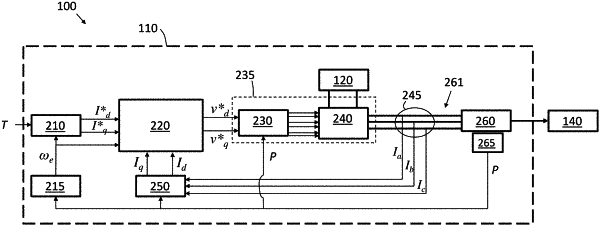| CPC H02P 27/08 (2013.01) [B60K 6/22 (2013.01); B60L 50/60 (2019.02); B60L 2210/42 (2013.01); B60Y 2200/91 (2013.01); B60Y 2200/92 (2013.01); B60Y 2400/61 (2013.01)] | 20 Claims |

|
1. A system in a vehicle, comprising:
a current regulator configured to obtain current commands from a controller based on a torque input and provide voltage commands;
an inverter configured to use the voltage commands from the current regulator and direct current (DC) supplied by a battery to provide alternating current (AC); and
an electric traction motor configured to provide drive power to a transmission of the vehicle based on injection of the AC from the inverter, wherein the current regulator adjusts parameters of a transfer function implemented by the current regulator, based on feedback of an input to and an output from the electric traction motor to achieve the AC corresponding with the torque input;
wherein the current regulator includes at least one of
a) look-up tables or polynomial functions to provide inductance values to adjust the parameters of the transfer function based on the direct-axis current Id and the quadrature-axis current Iq from the forward prediction filter or based on the current commands from the controller,
b) look-up tables or polynomial functions to provide a resistance value to adjust the parameters of the transfer function based on the shaft speed of the electric traction motor, and
c) a look-up table to mitigate speed dependent error in the control of direct-axis current Id and quadrature-axis current Iq.
|